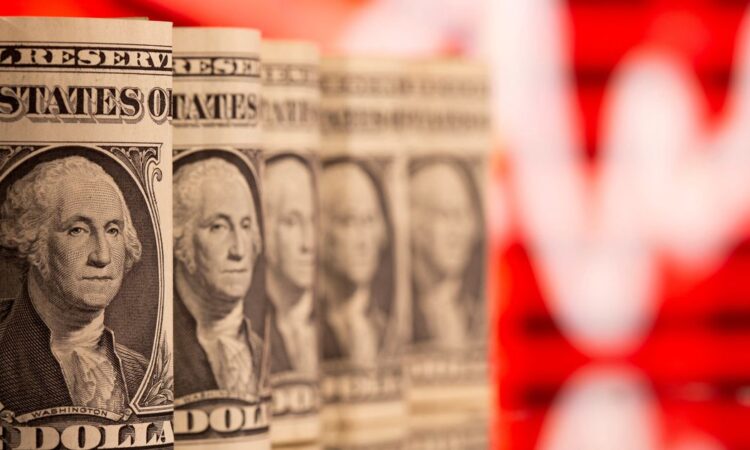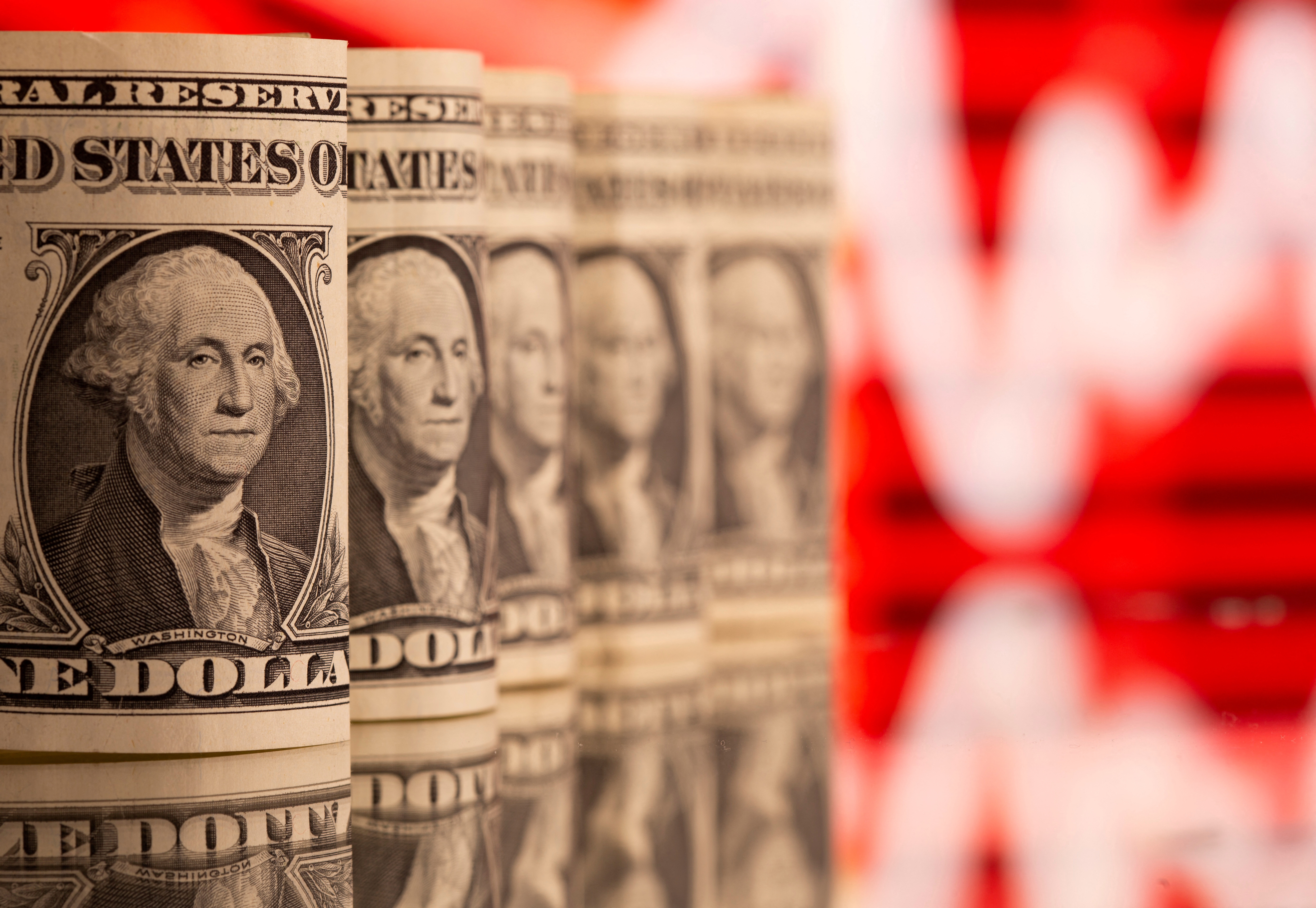

U.S. one dollar banknotes are seen in front of displayed stock graph in this illustration taken, February 8, 2021. REUTERS/Dado Ruvic/Illustration/File Photo Acquire Licensing Rights
SINGAPORE, Nov 2 (Reuters) – The dollar fell broadly on Thursday, with risk-sensitive Asian currencies leading gains, as investors cheered a likely peak in U.S. interest rates after the Federal Reserve left them on hold.
Focus now turns to the Bank of England and sterling crept 0.3% higher to $1.2180 and firmed to 86.98 per euro in anticipation of rates being held at high levels.
Fed Chair Jerome Powell left the door open to another hike, but with the funds rate target ceiling at 22-year high of 5.5% he said the risks of doing too much or too little were now balanced.
Markets took that as a green light to stick with a sub 20% chance that rates will rise in December. Ten-year Treasury yields are down 20 basis points from Wednesday’s highs, equities rallied and risk-sensitive currencies bounced.
The Australian dollar jumped 0.9% on Wednesday and another 0.7% on Thursday to touch a three-week high of $0.6439. The New Zealand dollar hit a two-week peak of $0.5896.
Bitcoin , sometimes traded as a proxy for risk-taking, broke above $35,000 for the first time since May 2022.
“Going back to the last FOMC meeting, we were talking about more rate hikes, and now it’s a lot more balanced and a lot more cautious,” said IG Markets analyst Tony Sycamore.
“That’s supported equity markets and I think it’s supported the pointy end of the risk spectrum, which is where bitcoin sits.”
Traders also drew further conviction that U.S. rates could have peaked after data showed U.S. manufacturing contracted sharply in October, though separate data pointed to a still-resilient labour market, which is likely to see the Fed keeping rates at restrictive levels for longer.
The euro rose 0.2% to $1.0597, the Swiss franc rose for a second day in a row and the yen was helped off a one-year low to 150.45.
The yen has been struggling for traction, even as the Bank of Japan on Tuesday made another relaxation of its yield curve control policy, with the gap against much higher U.S. interest rates seen staying too large to turn around the exchange rate.
The yen is down more than 20% on the dollar in two years.
“At the end of the day, the last two years’ broad yen underperformance can only reverse when one simple thing happens: the Bank of Japan starts hiking rates, and far more than a tiny move to zero,” said Deutsche Bank FX research head George Saravelos.
“When and if that happens, rather than FX intervention, is pretty much the only thing that matters.”
Markets price an almost 90% chance the Bank of England keeps rates on hold at a 15-year high later on Thursday, but have not fully priced a rate cut until September 2024 — well after cuts are expected to have begun on the continent.
“Pricing is reflecting the view that BoE rates will have to remain on ‘Table Mountain’ for some months given the UK’s inflation risks,” said RaboBank FX strategist Jane Foley.
“On the assumption that the BoE indicates … that rates are set to remain on hold for some months, sterling is likely positioned to win back a little ground versus the euro.”
Reporting by Rae Wee. Editing by Sam Holmes
Our Standards: The Thomson Reuters Trust Principles.




